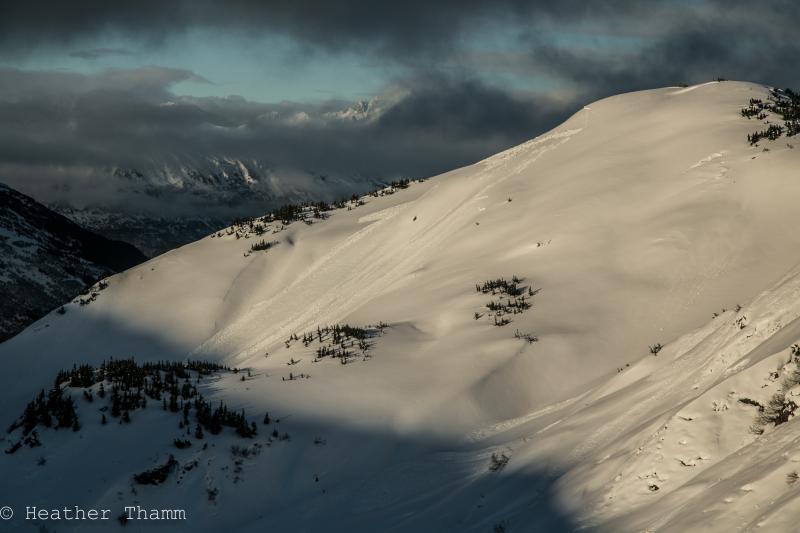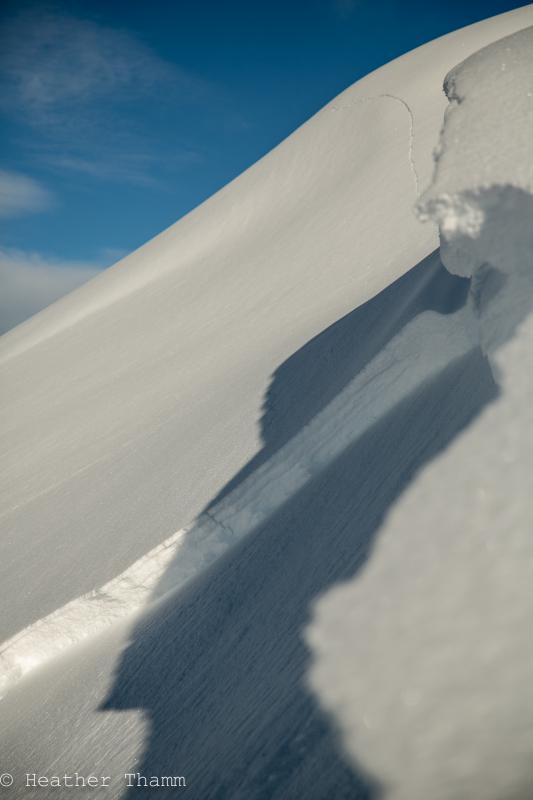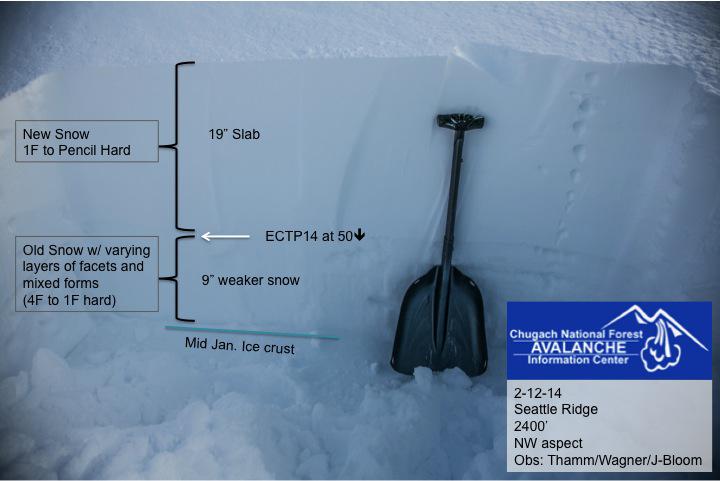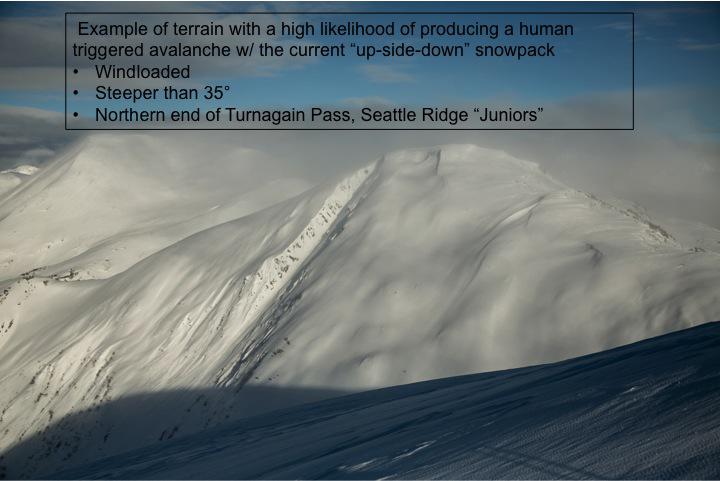Field Observations
Feb.12, 2015
Route
Seattle to Seattle Wx Station 2400′
Weather
Temps: 32F at 1000′ to high 20’sF at wx station
Wind: East 5-15mph
Sky: Obscured in the AM w/ clear patches of sky in the afternoon
Precip: Raining/Snowing until 11am
Rain/Snow line: 1500′
Obvious Signs Of Instability
Recent Avalanches- Yes, a remote trigger from 300′ away (D-1.5) Possible natural avalanche D-2 on South
aspect of Main bowl, adjacent to “Widow Maker” (see pics)
Shooting Cracks- Yes – Localized cracking under skis and one large shooting crack extending from crown
of remote trigger.
Collapsing – Yes – Widespread collapsing when traveling over areas where the slab was thicker and more
supportable
Glide Avalanches/Cracks- No new activity observed
Surface Obs –
1000′ Parking area: 5″ snow from Feb.10 that was recently rained on in the morning, Had a 1″ crust by late
afternoon, when temps cooled.
1500′ on Seattle Up-track: 6″ snow from Feb.10, w a light crust after skies cleared and temps dropped
2000 -2400′: Average of 10″ of snow from Feb.10 with wind loaded areas up to 20″ thick. Sun crust on
South aspects
*Seattle Ridge had more snow on the Northern side as we approached the weather station. 6″ near Seattle
up-track vs. 10-12″ near Wx station.
Below the surface:
Widespread facets have been well documented over the last few weeks and are sitting under the new snow
load from Feb.9-10. We found areas where the facets were large (3mm) in shallow areas, but were smaller
and less developed where the older snow was deeper. Where the slab is thicker and more cohesive the
facets below (even where they are less developed) are still quite reactive. (see photo of test pit.) This pit
was dug in wind loaded area below the weather station and produced test score of ECTP14 50cm below
the surface where the new snow and old faceted snow interface. The slab in this location was dense (1F to
Pencil Hard) and is representative of wind loaded areas on the Northern side of Seattle Ridge, where more
snow fell.
The most notable events observed today was an avalanche we triggered remotely from 300′ away, just
below the wx station. This was on a very steep (46*) feature where the terrain suddenly turns into a flat
gully. It only ran 50 feet to the bottom of the flat gully. The slab averaged 10-12″ thick. Upon our return
along Seattle Ridge South towards the up track, we also found evidence of a recent avalanche on a
southern aspect in Main Bowl (aka- Bowl 2,) adjacent to “Widow Maker.” We did not have good visibility
when we passed this area earlier in the day and do not know what triggered it. This slide was much larger
(d-2) and ran 1000′ to valley floor. See photo below.
The fact that we could remotely trigger an avalanche 300′ away is evidence that this weak layer is highly
reactive and the slab has enough strength to propagate. The combination of new snow and wind loading has added stress to a very unstable weak layer. Where the slab is thicker and more dense will be areas where human triggered avalanches are more likely.
In places where less snow fell like on the South side of Turnagain Pass these slabs will be shallower, but
will still be easy to trigger on steep slopes. Right now it is best to avoid large terrain with slope angles
greater than 35*.




